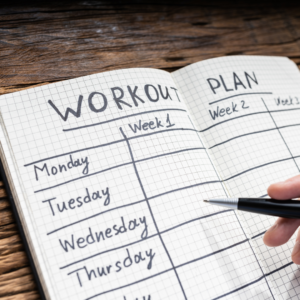Hey there, runner fam — Blaze here! Let’s be real: even the most dedicated runner has those days. You know the ones… the couch is cozy, the tacos are calling, and your running shoes look like they’re judging you from across the room.
But guess what? It’s totally normal. Motivation isn’t a constant flame — sometimes you’ve gotta relight it. So here are 5 fun, realistic ways to lace up even when your brain screams “not today!”
1. Hit Play on a “Run or Bust” Playlist
Music has magic powers — especially when you’re dragging. Make a go-to playlist that kicks off with a few songs you can’t not move to. Bonus points if it starts with some Austin favorites!
Need ideas? “Pump Up Running Mix” on Spotify is one of our favorite playlists – perfect for turning slow steps into a full-on jam session.
2. Phone a Running Buddy
Running solo is peaceful… but when motivation dips? A buddy can be your secret weapon. Set up weekly accountability texts or go full-on “run and brunch” meetups.
Not sure where to find your crew? Check out local Austin running clubs or meetups – the city’s full of friendly faces ready to sweat it out with you!
3. Make It Instagram Official
Okay, hear me out — post about your run before you do it. That simple “I’m going for 3 miles today” story can do wonders for commitment. Your future self (and your followers) will cheer you on.
Even better: snap a mid-run selfie with a classic Austin backdrop — like the Congress Bridge wall or that dreamy Lady Bird Lake view.
4. Bribe Yourself (In a Good Way)
Set up a mini reward system. It can be anything:
-
Coffee after your run? Yes please.
-
An extra-long shower with your favorite playlist? Do it.
-
That new pair of running shorts you’ve been eyeing? Earn ‘em.
Training for the Austin International Half is a journey — a few perks along the way make it sweeter.
5. Remember Your ‘Why’
This one’s powerful. Think back to why you signed up.
To challenge yourself? To celebrate a milestone? To prove something to you?
Write it down. Tape it to your mirror. Set it as your phone background.
When motivation fizzles, reconnecting to your purpose will reignite your fire.
You’ve Got This, Runner.
One off-day doesn’t define your journey — but getting out there despite it? That’s what makes you a rockstar.
So tie those laces, press play, and take that first step. Blaze is cheering for you — every stride, every mile, every taco you earn.
Do I Still Have Time to Train for a Half Marathon? Yes, and Here’s How to Start Today!
You’ve decided you want to run a half marathon—awesome! But maybe you’re worried you don’t have enough time to train, or you don’t know how to begin. Good news: You absolutely still have time, and you can start today! No need to overthink it or feel overwhelmed. You don’t need to jump into an intense training plan right away—sometimes the best thing you can do is just start. Here’s a guide on how to kick off your half marathon journey right now and build momentum without feeling like you’re behind.
1. Get Out for a Run Today (Yes, Right Now!)
The first step toward running a half marathon is, well, running! The beauty of today’s workout? It doesn’t have to be long or intense. Your goal is to simply lace up your shoes and go for a run or jog. Here’s how to keep it easy and enjoyable:
- Begin with a Warm-Up: Walk briskly for 5–10 minutes to get your muscles loose and your heart rate up.
- Run/Walk Combo: If you’re new to running or haven’t been consistent, try a run/walk method. Start with 1 minute of running followed by 2 minutes of walking, and repeat this pattern for 20–30 minutes.
- Set a Distance or Time Goal: If you’re feeling good, aim for a short distance like 1–3 miles, or simply run for 20–30 minutes at a comfortable pace. Don’t worry about speed—focus on getting your body moving.
This first run isn’t about crushing records. It’s about taking that first step toward your half marathon goal. The hardest part is just starting, and once you do, you’ll already be one step closer to that finish line.
 2. Start a Stretching & Mobility Routine
2. Start a Stretching & Mobility Routine
Running is great, but keeping your body flexible and injury-free is key for long-term success. After your run (or even before, if you’re not ready to hit the pavement just yet), spend 10–15 minutes on some basic stretches and mobility work:
- Hip Flexor Stretch: Kneel on one knee and push your hips forward to stretch your hip flexors. Hold for 30 seconds on each side.
- Hamstring Stretch: Sit with one leg extended and reach toward your toes, holding for 30 seconds on each side.
- Calf Stretch: Stand facing a wall, place your hands on the wall, place one foot behind the other, and press the heel of the back foot into the ground. Hold for 30 seconds per leg.
These stretches are simple, but they’ll help your muscles recover from today’s run and prepare you for the next one.
 3. Commit to a Goal (And Write It Down!)
3. Commit to a Goal (And Write It Down!)
Goals give your training purpose, so take a few minutes today to define your half marathon goal. Is it simply to finish the race? Do you have a target time in mind? Maybe your goal is to run the entire race without walking. Whatever it is, make it personal to you.
Once you’ve set your goal, write it down. This small act makes your goal feel more real and will help you stay motivated. Keep that piece of paper somewhere visible—on your fridge, desk, or as a note on your phone—so you’re constantly reminded of what you’re working toward.
 4. Pick a Date for Your Long Run
4. Pick a Date for Your Long Run
Long runs are the backbone of half marathon training, and they don’t have to be scary! All you need to do today is pick a day this week to go a little farther than you did on your first run. If you ran 2 miles today, set a goal for 3–4 miles later this week. It doesn’t matter how fast you go—just focus on covering the distance.
Here’s a simple way to get started:
- Day 1 (Today): Start with an easy run or run/walk session.
- Day 2 (2–3 days later): Go for another short run, similar to today’s effort.
- Day 3 (Later this week): Pick a day for your long run. Plan to run or walk/jog at least 1 mile farther than your shorter runs. For beginners, this could be a 3-mile jog/walk. For more experienced runners, it could be 4–5 miles at an easy pace.
By scheduling your long run in advance, you’re giving yourself something to look forward to and a tangible goal to work toward.
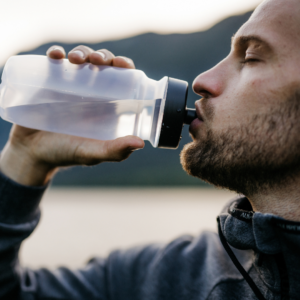 5. Fuel Your Body Like a Runner
5. Fuel Your Body Like a Runner
As you start running more consistently, what you eat and drink becomes even more important. Today’s the perfect time to start thinking about fueling your body for success. You don’t need to overhaul your diet, but small changes can make a big difference in how you feel during your runs.
- Hydrate: Make sure you’re drinking plenty of water throughout the day, not just right before or after your runs. Make sure you’re drinking plenty of water throughout the day, not just right before or after your runs. Dehydration can make even short runs feel exhausting. If you’re looking to mix up your water, try the BPN Electrolytes Hydration Drink Mix, with 500mg of Sodium per serving to replenish what is lost through exercise, sweat and daily movement. Dehydration can make even short runs feel exhausting.
- Eat a Balanced Diet: Focus on whole foods like fruits, vegetables, lean proteins, and whole grains to keep your energy levels high. Include healthy carbs to fuel your runs and protein to help with muscle recovery.
- Pre-Run Snack: Before your next run, try alight snack like a banana, a small handful of nuts, or check out BPN’s GO BAR Endurance Bar to keep you fueled while you are training.
 6. Find Your Support System
6. Find Your Support System
Running a half marathon can be a solo pursuit, but it doesn’t have to be. Today, think about who can support you on this journey. Maybe it’s a friend or family member who can join you for a run or cheer you on. Or, consider joining a local running group, even if it’s virtual.
Sharing your goals with others makes them more real, and having people in your corner will keep you motivated, especially on those days when you don’t feel like running.
 7. Plan Your Next Run
7. Plan Your Next Run
To keep your momentum going, plan your next run right now. Open your calendar and block out 30 minutes for your next workout in the next 2–3 days. Knowing exactly when you’ll run next takes the guesswork out of your training and helps you stay on track.
Get Started Now—The Rest Will Follow
You don’t need to dive into an intense training plan or know all the answers to start training for a half marathon. The most important thing you can do is take that first step. Whether it’s a short run, a stretch session, or simply setting a goal for your next run, starting today will set you up for success.
Remember, every step you take gets you closer to the finish line of the AIH. Whether you have 12 weeks or just a few, with smart training and a commitment to start, you’ll be ready to crush it come race day. So, what are you waiting for? Lace up those shoes, get out there, and start chasing that finish line. You’ve got this!
The AIH is all about community and growth. Starting your journey today means you’re already a part of something bigger—an incredible experience where every step counts. Happy running!
Running is an amazing way to stay fit, clear your mind, and explore the world around you—especially in a city like Austin, where the trails are as lively as the music scene! But nothing puts a damper on a good run like knee pain. If you’ve been searching for ways to stop your knees from hurting when you run, you’re not alone. Let’s dive into some practical tips to keep those knees happy and healthy, so you can keep pounding the pavement pain-free.
 1. Check Your Form: The Foundation of Pain-Free Running
1. Check Your Form: The Foundation of Pain-Free Running
Proper running form is key to preventing knee pain. A few things to keep in mind:
- Lean slightly forward: This helps reduce impact on your knees and keeps your stride efficient.
- Shorten your stride: Overstriding can put extra stress on your knees. Aim for a midfoot stride, landing with your foot under your body rather than in front.
- Keep your knees soft: Avoid locking your knees, which can increase the impact on your joints.
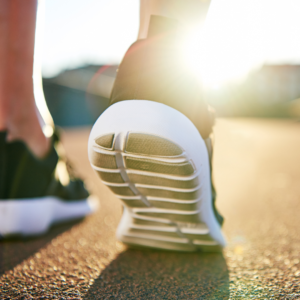 2. Invest in Quality Footwear
2. Invest in Quality Footwear
Worn-out or ill-fitting shoes can be a big culprit behind knee pain. Make sure you’re wearing running shoes that provide adequate support and cushioning for your specific foot type. If you’re unsure, a visit to a local running store, like Fleet Feet for a gait analysis can be incredibly helpful. They’ll guide you to shoes that suit your running style and foot shape, reducing the stress on your knees.
 3. Strengthen Your Legs and Core
3. Strengthen Your Legs and Core
Strong muscles support your joints and absorb some of the impact that would otherwise stress your knees. Focus on:
- Quadriceps: Strong quads can stabilize your kneecap and prevent it from shifting out of place.
- Hamstrings and glutes: These muscles work together to propel you forward, taking the load off your knees.
- Core: A strong core helps maintain good posture and running form, reducing unnecessary strain on your knees.
Incorporate exercises like squats, lunges, and planks into your routine to build up these muscle groups.
 4. Warm Up Properly
4. Warm Up Properly
Jumping into a run without warming up can lead to injury. Start with a dynamic warm-up to get your muscles ready and your joints lubricated. Simple moves like leg swings, high knees, and lunges can do wonders to prepare your knees for the miles ahead.
 5. Listen to Your Body
5. Listen to Your Body
It’s easy to push through discomfort in pursuit of your running goals, but ignoring knee pain can lead to serious injury. If you feel pain, don’t be afraid to slow down, take a break, or even stop to assess what’s going on. Sometimes, a bit of rest is all you need to recover and come back stronger.
 6. Cross-Train to Avoid Overuse
6. Cross-Train to Avoid Overuse
Running is repetitive, and that can lead to overuse injuries like runner’s knee. Mixing up your workouts with low-impact activities like swimming, cycling, or yoga can give your knees a break while still keeping you fit. Plus, cross-training strengthens different muscle groups, making you a more well-rounded athlete.
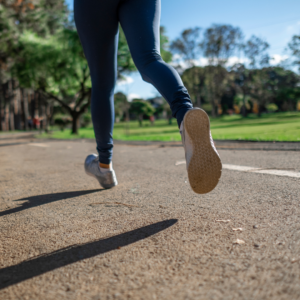 7. Consider Your Running Surface
7. Consider Your Running Surface
The surface you run on can affect your knees. Hard surfaces like concrete can be tough on your joints, while softer surfaces like trails or grass offer more cushioning. Try mixing up your routes to include a variety of surfaces and give your knees a break from constant pounding.
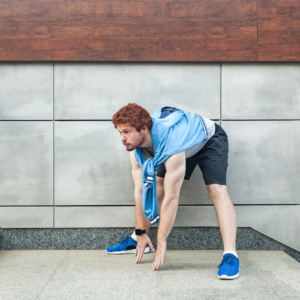 8. Stretch and Recover
8. Stretch and Recover
Post-run stretching is crucial for maintaining flexibility and preventing tightness that can lead to knee pain. Focus on stretching your quads, hamstrings, calves, and IT bands. And don’t forget about recovery techniques like foam rolling, which can help release tension in the muscles surrounding your knees.
 9. Consult a Professional
9. Consult a Professional
If knee pain persists despite these adjustments, it might be time to see a healthcare professional. A physical therapist or sports medicine doctor can assess your situation, provide targeted exercises, and help you correct any imbalances or weaknesses contributing to your pain.
Final Thoughts: Keep Running Strong
Knee pain doesn’t have to sideline your running goals. By making small adjustments to your form, footwear, strength training, and recovery routines, you can protect your knees and keep enjoying the miles. Remember, running should feel good, so take care of your body and it will take care of you.
If you’re gearing up for a big race, like the Austin International Half, these tips are even more important. Let’s keep those knees in top shape so you can cross that finish line with a smile on your face and pain-free legs!
Hey there, future half marathoners! Blaze here, your trusty guide and the fiery mascot of the Austin International Half. August is here, and it’s the perfect time to start gearing up for the big race. Whether you’re a seasoned runner or just lacing up your sneakers for the first time, I’ve got five essential tips to help you kickstart your journey to the Austin International Half. Let’s blaze a trail to success together!
1. Set Clear Goals and Make a Plan
First things first, set clear, achievable goals. Do you want to finish the race, hit a specific time, or just enjoy the journey? Whatever your aim, having a goal will keep you motivated. Once you’ve set your sights, create a training plan that suits your level. Learn how to set your training goals.
Beginners might start with a run/walk program, while experienced runners can focus on improving their pace and endurance. Consistency is key, so stick to your plan and watch those miles add up!
2. Explore Austin’s Scenic Running Spots
One of the best parts about training for the Austin International Half is exploring the city’s fantastic running routes. From Town Lake Trail to the challenging hills of Barton Creek Greenbelt, Austin offers a variety of terrains to keep your runs interesting. Not only will you build stamina, but you’ll also fall in love with the vibrant running community and the beautiful Texas scenery.
Grab a friend and hit the trails! Looking for more running friends? Consider joining a group run, find full listing at werunaustin.com

3. Fuel Your Body Right
Running a half marathon is as much about nutrition as it is about training. Fueling your body with the right foods will boost your energy and improve recovery. Focus on a balanced diet rich in lean proteins, whole grains, fruits, and vegetables.
Don’t forget to stay hydrated, especially in the Texas heat. Experiment with different pre-run and post-run snacks to see what works best for you. Remember, you are what you eat, so nourish your body for peak performance.

4. Incorporate Cross-Training and Rest Days
Variety is the spice of life, and the same goes for your training routine. Incorporate cross-training activities like cycling, swimming, or strength training to build overall fitness and prevent injury. These activities work different muscle groups and keep your workouts exciting. Equally important are rest days.
Your body needs time to recover and build strength, so don’t skip them. Listen to your body – it’s the best coach you have.

5. Stay Positive and Have Fun
Lastly, keep a positive mindset and enjoy the journey. Training for a half marathon is a big commitment, and it’s normal to have ups and downs. Celebrate your progress, no matter how small, and don’t be too hard on yourself.
Surround yourself with supportive friends, join running groups, and share your experiences. The Austin International Half is all about community and having a blast, so make sure to have fun along the way!
There you have it, folks – Blaze’s top five tips to kickstart your half marathon journey. Remember, every step you take brings you closer to that finish line. Stay motivated, stay positive, and let’s make this journey to the Austin International Half unforgettable. See you on the trails!
Flaming with enthusiasm, Blaze
Latest Blogs:
NEWSLETTER
Thank you for signing up. You will be the first to know about new releases, giveaways & special projects. Stay tuned.










